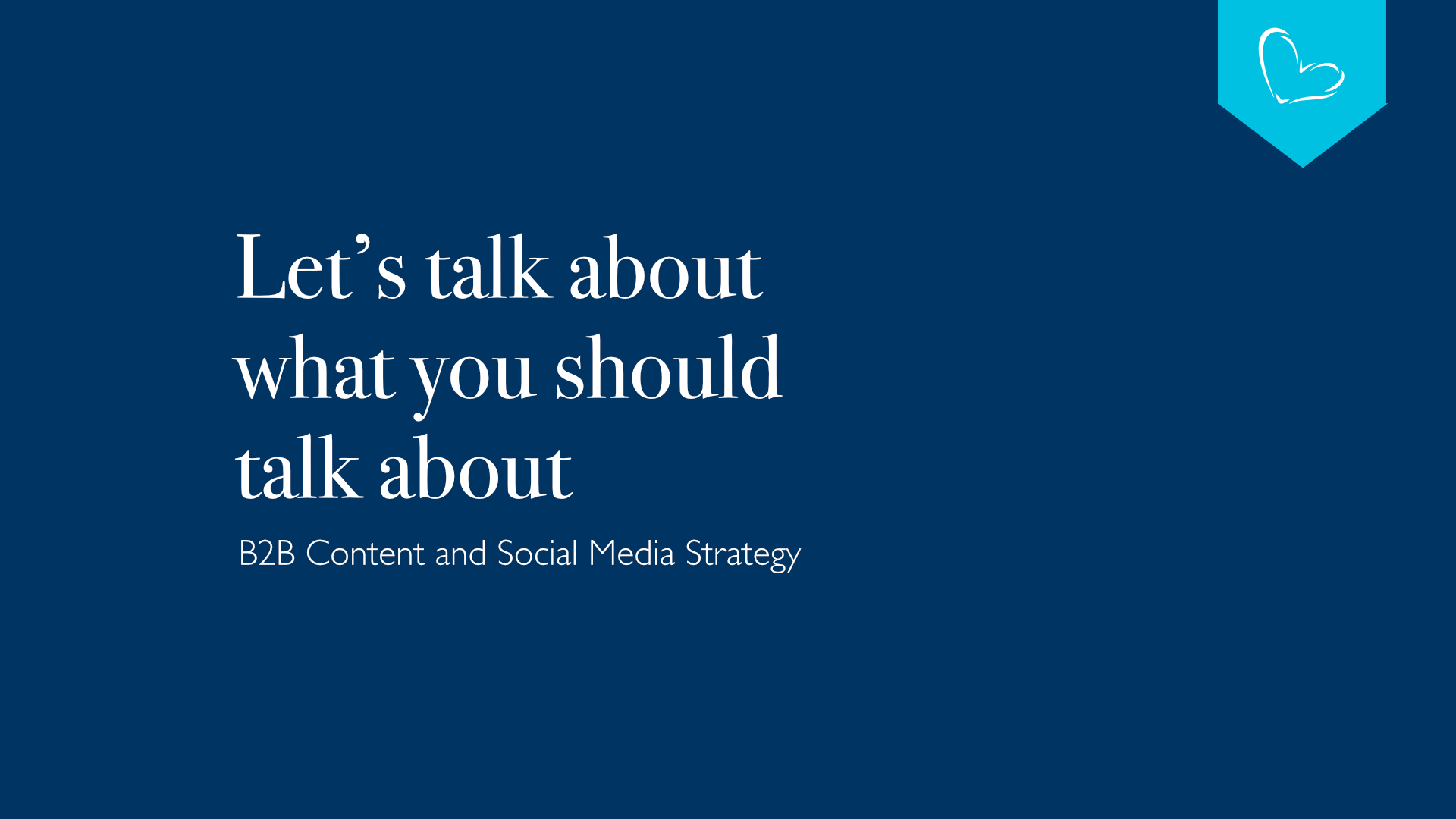
Let’s talk about what you should talk about to get noticed if you are in B2B, ergo, where the unfulfilled content demand is.
This applies to all media you might be using or considering: blogs, social media including LinkedIn, video, speaking engagements, webinars, ebooks, newsletters, books, and more.
This opportunity will be the core of your content or social media strategy.
So let's get going.
Attention is the scarcest resource in modern times.
The world is full of content (blog posts, videos, social media posts), and more is produced every day. It gets harder to get attention every day.
However, for the last 10 years, the same opportunity has remained, and will likely remain. It's huge and remains to be huge.
Following Simon Sinek’s Why—How—What framework, which he explains in his book Start with Why, we could categorize content into three main categories, which I will cover in reverse order of importance. This categorization applies to most content.
What-content: what you do, how great you are, what your product is
You are most likely talking, writing, and posting about what. That is, what you do, what your company does, and what your product does.
I call these “me/we-content.” You talk about yourself.
People and companies like to talk about themselves, yet few like to listen. Supply exceeds demand by a factor of 100.
Check your LinkedIn feed: mostly me/we content. Check the average corporate blog: mostly me/we content.
Should you do it? One-sixth of your content max.
Why-content: why this is important, why they should start
Sinek would like you to start with why.
The Why content explains why something is important and why someone should listen or read on. Why is a great way to start, but that's not where the beef is.
The best example of why content can be found on webinars and corporate seminars is in a popular subtype, which I call revival meetings. These events are all about waking up the audience to understand how important it is to start doing whatever the presenter or organizer is selling.
Many sales processes and marketing also start with why, as they should. You may have blogs and white papers that cover the why.
Yet, most companies believe too much in the power of why, jumping straight to what, skipping the most important part of the funnel, which we are talking about next. But first, let's cover the problems of why.
For many, the thinking goes like this: If we can argue the case strongly enough (with why) to a prospect, the prospect will be ready to learn about our solution. If we can then prove (with what) that we are the best option, we will win the case. Our solution is easy to implement, turn-key, and done for you; thus, there is nothing for the prospect to learn, worry about, or do other than sign the contract and pay the bill.
Professor Robert Cialdini, a leading expert on persuasion, writes in his bestseller Pre-Suasion: A Revolutionary Way to Influence and Persuade that you cannot influence how a customer thinks. So maybe it isn't about proving the case.
How-content: How to prepare and succeed in the transition.
When it comes to most B2B products and services, customers buy transformation in one way or another. They want to get to the next level.
But that’s never as simple as submitting control and trust to a vendor and allowing them to do it for them.
If things don’t go smoothly within the organization, the prospect's job is on the line. She is wise enough to know that nothing is even 30% as simple and guaranteed as the vendor claims.
What the vendor delivers is usually a small fraction of the gross project, even with all the options and services. So done-for-you is seldom sign and pay. There is still a lot the customer needs to do at their end to really get the benefits and succeed.
It has to be sold and explained internally, even if the CEO makes the decision. Processes, procedures, and job descriptions will likely be affected; if not, people might fear that they are. Finally, there are dependencies with other systems, projects, timelines, and whatever else that cannot be delegated to the vendor.
So, the customer needs to understand how to evaluate their needs, plan the overall project, not just the delivery of the solution/service, prepare for it, onboard, succeed, and so on.
How is where the opportunity lie.
Although you cannot influence how a prospect thinks, you can influence what the prospect thinks, says Cialdini.
They want to learn how, and there is a lot to cover. How content is perfect for getting and keeping attention, educating prospects, building trust, and, most importantly, leading them to see the world how you see it while doing it subtly.
This helps keep the topic on their mind and top of their agendas. This is about influencing what to think about.
In other words, you educate the customer. And only educated customers are ready to buy.
When they have completed your education, they see the world the way you do, which means they are prepared for your unique position in the market.
Yet, too few talk about the how. And those who do, do it quite poorly.
This is your opportunity: how content.
In a recent podcast interview, Seth Godin, a world-renowned marketing expert, was asked how he would start a successful business from scratch in 90 days if he couldn’t take advantage of his name or contacts. He would select the smallest niche to sustain (in the long run). Then he would create the most relevant and best how content for that niche. This should be enough to get customers to contact him, even without actually mentioning what he offers, even without tons of what and why.
Conclusions
I have been talking about this opportunity for ten years and will likely talk for the next ten years, as it is not going anywhere, just moving to new places.
Blogging and search engine optimization (SEO) used to be the thing, but competition in written content and Google is now fiercer. However, there are still great opportunities in some topics, but not all. Yet, video (YouTube, TikTok, Insta...), webinars, podcasting, ebooks, newsletters, and online courses have expanded the playground.
LinkedIn itself has tons of opportunities to get attention with how content, whether posts, articles (like this), videos, live streams, or more.
- Competition for prospects’ attention is fierce, and attention is the scarcest resource for any business.
- Content is still, and even more so, the king. Yet, focus efforts on where unfulfilled demand is, not where supply exceeds demand.
- That’s how content. Help customers understand the topic, evaluate needs, and navigate to success.
- Most companies and competitors don’t do it, at least properly.
- The game is about who understands what questions customers have (at how phase), especially those they are afraid to ask.
- In short, talk about how!
 |
Written by Antti Pietilä Antti is the founder and CEO at Loyalistic (Simple Content Marketing Software for B2B Companies) who loves to help SaaS-companies to grow at Software Entrepreneurs (@ohjelmisto_ry) and cycle. Say hello to him anytime @anttipietila. |
